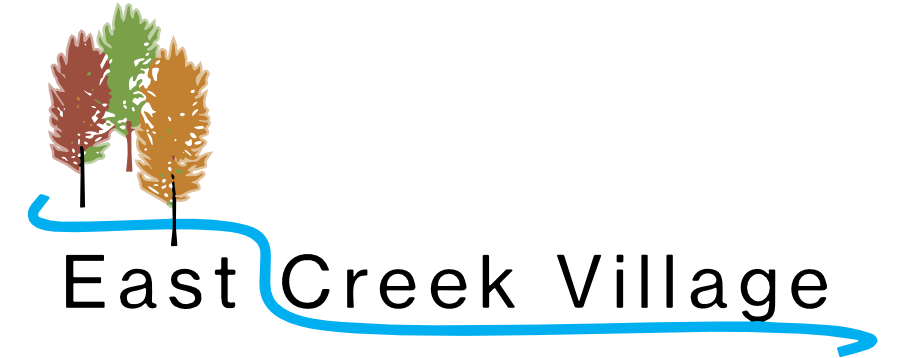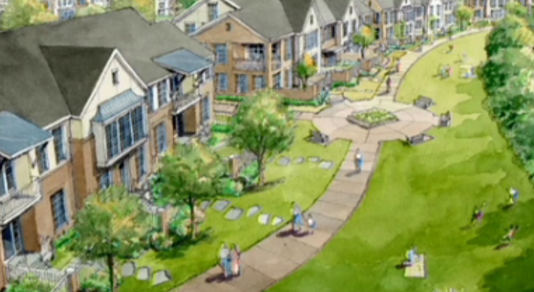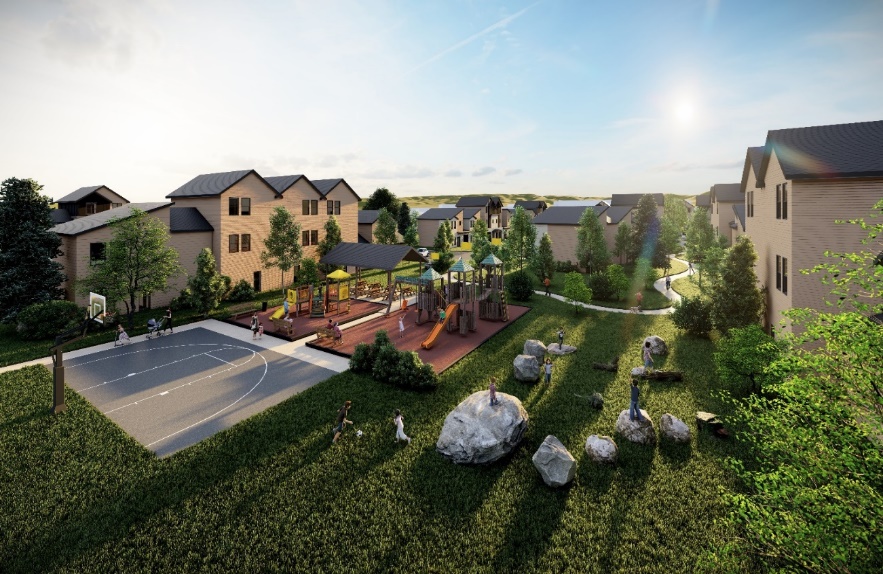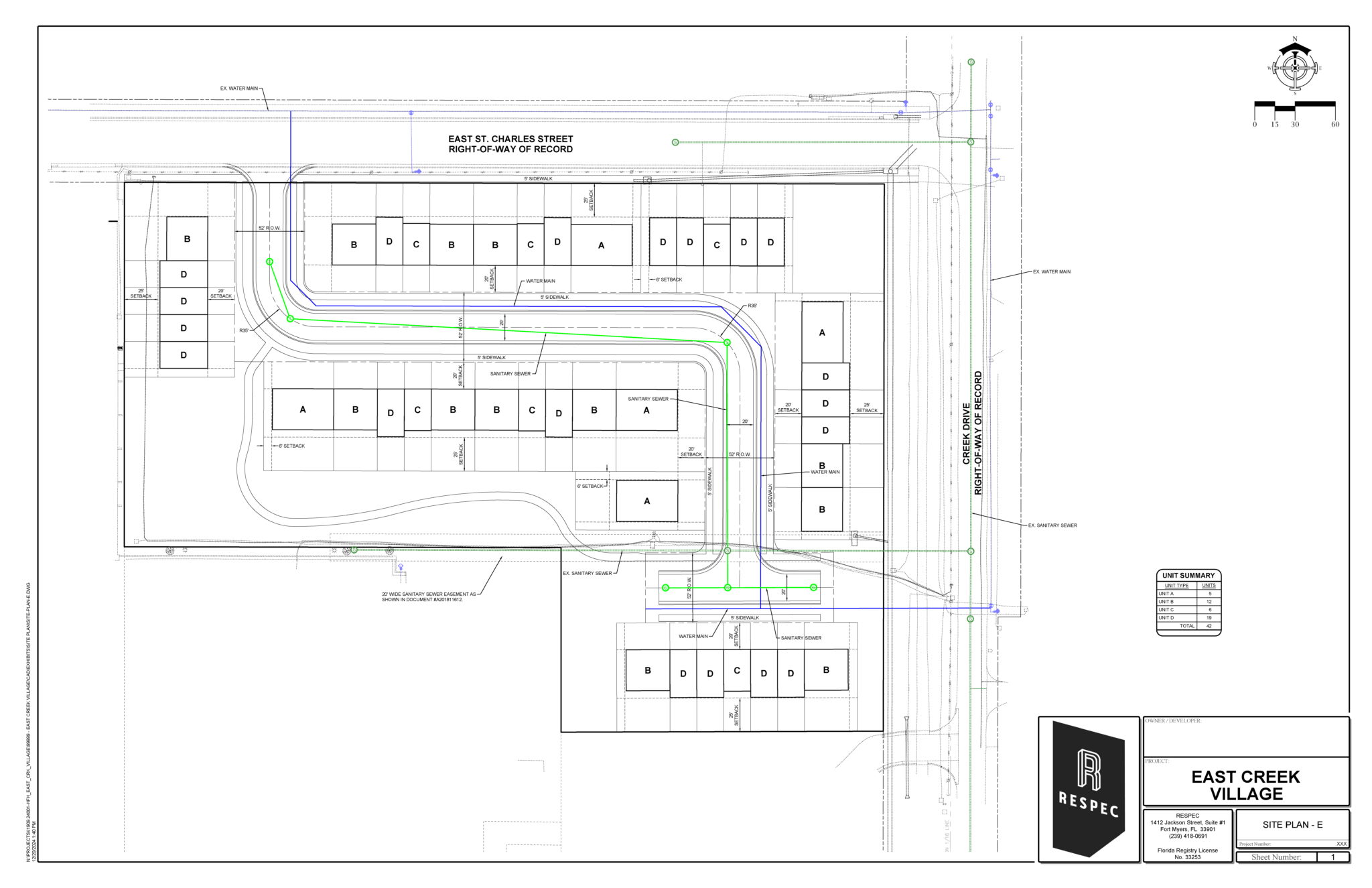
EAST CREEK VILLAGE
Affordable / Workforce Housing Development
RAPID CITY, SD: RURAL HABITAT AFFILIATE'S JOURNEY TO $3 MILLION

East Creek Village is a mixed income affordable homeownership opportunity for more than forty families at corner of East St. Charles and Creek Drive in Rapid City, SD. It offers an affordable in-fill townhome concept that bridges housing density with ownership and quality of life, while leveraging existing infrastructure of city.
- Owner occupied housing creating more stability in the neighborhood
- Close in proximity to existing amenities i.e., grocery store, restaurants, bike path, softball fields, public transit, employment opportunities
- City infrastructure in place to support housing units
- A more transitional/dense housing configuration with drive under/drive along garages
- 5% ADA units
- All units aging in place designed (first floor bedroom/bath, or pre-fit with elevator shaft)
TIMELINE
October 2021 – General site concept
November 2021 – Architecture design contract signed
December 2021 – First Version with 22’ road and no ROW
March 2022 – Second version with 26’ road and no ROW
- Discussions around need for long-term affordability and seeking city
June 2022 – 52’ Design with City Street ROW
Sept 2022 – Final site submitted with ROW
Sept 2022 – Senator Rounds sends team to Rapid City to review site and plans
Oct 2022 – Planning meeting rejecting design and requiring redesign with conditions:
- One water meter and developer handle sub-metering
- No city ROW @ 52’, now 74’
- No City services to residents
- Developer to handle Trash, Water (master meter with sub-metering paid by developer)
- Snow removal and lighting and ongoing maintenance
April 2023 – We submitted an FY24 Appropriations Request to Sen. Mike Rounds in the amount of $3,032,028 to help fund Phase 1 of a Black Hills Area Affordable Home Ownership and Workforce Development
March 2024 – We received notice of $3 million Congressional Direct Allocation sponsored by Sen. Mike Rounds to build an affordable/workforce housing development
August 2024 – Official Award letter from HUD
Current – Finalizing architectural design to obtain City approval and navigating final project documents and HUD requirements
Future – Expect this to be a 2–3-year project with follow-on Phase 2 and Phase 3
In 2021, we were awarded 1.2 million (10 percent of project cost) from the Dakota Charitable Foundation and received half for Phase I of the project. However, we were experiencing delays with City approvals and had to give the money back to the Foundation. Changes in Foundation leadership and direction might mean these funds are no longer available to us.
Each time the city rejected our plans, we lost valuable affordable housing space.
A challenge was working through TIF approvals with the City.
CHALLENGES ALONG THE WAY
1
In 2021, we were awarded 1.2 million (10 percent of project cost) from the Dakota Charitable Foundation and received half for Phase I of the project. However, we were experiencing delays with City approvals and had to give the money back to the Foundation. Changes in Foundation leadership and direction might mean these funds are no longer available to us.
2
Each time the city rejected our plans, we lost valuable affordable housing space.
3
A challenge was working through TIF approvals with the City.
SOUTH DAKOTA IMPACT
This project will serve more than forty low to moderate income families through affordable homeownership in the Black Hills Area. It will increase economic impact in Black Hills communities and provide affordable homeownership opportunities for families working in the public service sector (teachers, medical staff, police officers, etc.) who struggle to find affordable housing in our communities and often opt to move out of South Dakota as a result. With our program, these essential community members will continue to live and work in the communities where they are drawn to invest their lives.
THE WHY
LEVERAGE: WHAT DID IT TAKE?
> 17 years of advocacy (City, State, Federal)
> Faith community connections
> Regional and state foundations
> Corporate relationships
> Grit, resilience, and dedication
> Faith, prayer, and gratitude


